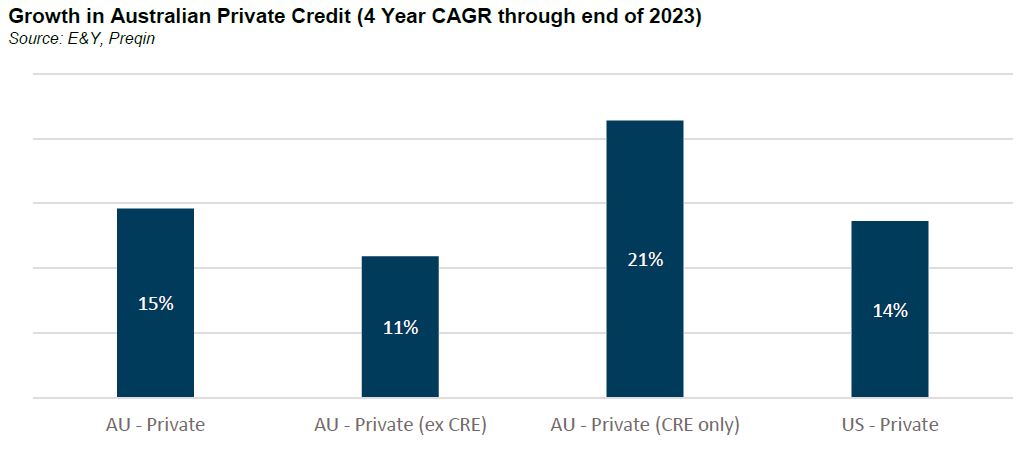Why boomers are propping up the Australian Economy (and 3 shares set to benefit)
Inflation is undoubtedly the most important investment data point of 2024, with central banks trying to manage the price inflation of goods and services lower, without driving the economy backwards (i.e. into recession.)
Inflation is the rate at which money declines in value (or purchasing power). A low and steady rate of decline encourages individuals to a) spend their money and b) find ingenious ways to make more money from fewer resources - otherwise known as innovation or productivity.
Through increasing the cost of money i.e. interest rates, central bankers aim to reduce the demand for it – making spending less attractive and productivity gains, more valuable.
The latest data from the Commonwealth Bank (ASX: CBA) shows us that Australians are inequitably affected by inflation, with younger, working-aged people significantly disadvantaged, relative to older, retired Australians.
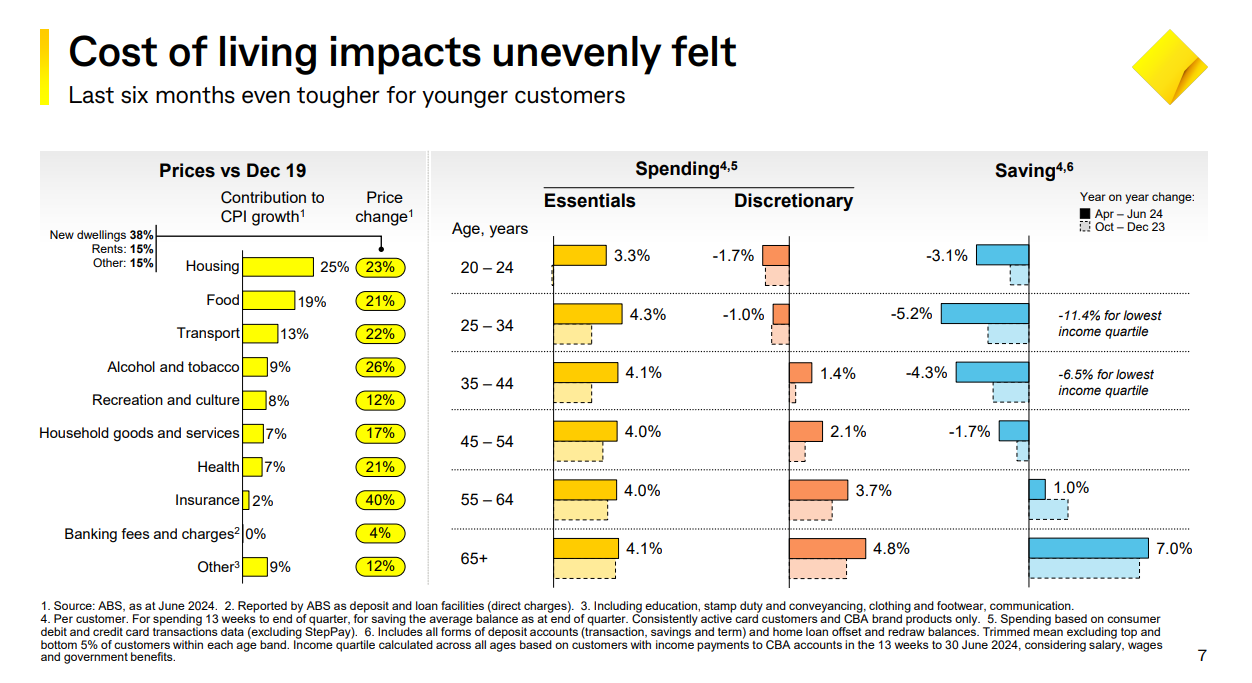
While most older Australians have very little or no mortgage remaining on their home, younger people have borne the brunt of a 23% increase in the cost of housing since the end of 2019 (a combination of interest expenses and rental increases). Quite the opposite, this price inflation increases the net wealth of older Australians who typically own those investments.
The cost of young people’s commute (transport) has gone up 22% and the cost of feeding their kids has gone up 21%. These costs are something that older people who don’t work simply do not incur; with any transport required subsidised by 50% in Victoria for those over 60 (with similar Senior’s Card schemes elsewhere in the country.) Elsewhere we have reports of childcare costs increasing 20-30% between 2018 and 2022 (source) and university prices increasing 7.8% (source), further examples of inequity.
While inflation on essentials affects everyone equally (approximately +4.0%), it's clear that inflation asymmetrically advantages retirees and older Australians – in a cost of living ‘crisis’ over 65’s are spending +4.8% more on discretionary items and saving +7% more!
Somewhat ironically, these policy decisions to advantage old people at the expense of young people appear in direct opposition to our national interest – which at least in my mind should be to increase productivity and sustainably grow the economy. Retirees pay little to no tax, do not typically start businesses and our national religion, investing in established real estate, creates little in the way of employment opportunities or productivity growth.
Until we see better policy, let’s try our best to exploit these trends and capitalise on the consumption and savings boom currently underway in the older demographic by investing in sectors supported by these trends.
More wealth… more wealth management
In what is only good news for us at Seneca, retirees with increasing net wealth need financial planning advice, tax-minimisation expertise and investment opportunities (if that's something you think we can help you with, feel free to book a free initial consult with me.)
However, our industry has (and to a degree, continues to) go through a significant period of change. Most industry participants point to the regulatory reform (the Hayne Royal Commission, FOFA reforms, new professional standards etc.) but often less spoken about is the digitisation of everything, including the infrastructure that traditionally supported the wealth management industry.
Platform businesses like HUB24 (ASX: HUB), Netwealth (ASX: NWL) and Praemium (ASX: PPS) allow even the smallest boutique advice business access to reporting, investment options and technology previously reserved for investment banks and large dealer groups (think the likes of the old AMP financial planning network).
This technology enhancement, along with the removal of vertical integration, has driven advisers to boutiques and unaligned independents (like Seneca), where we can put our clients at the centre of our universe and run leaner, more efficient, effective businesses.
We can see the trend towards these specialist platforms in the fund flows across the market. Incumbent, dealer group-aligned platforms (IOOF, BT, AMP, Colonial) are rapidly ceding market share to Netwealth & HUB24 (and to a lesser extent Macquarie & Praemium).
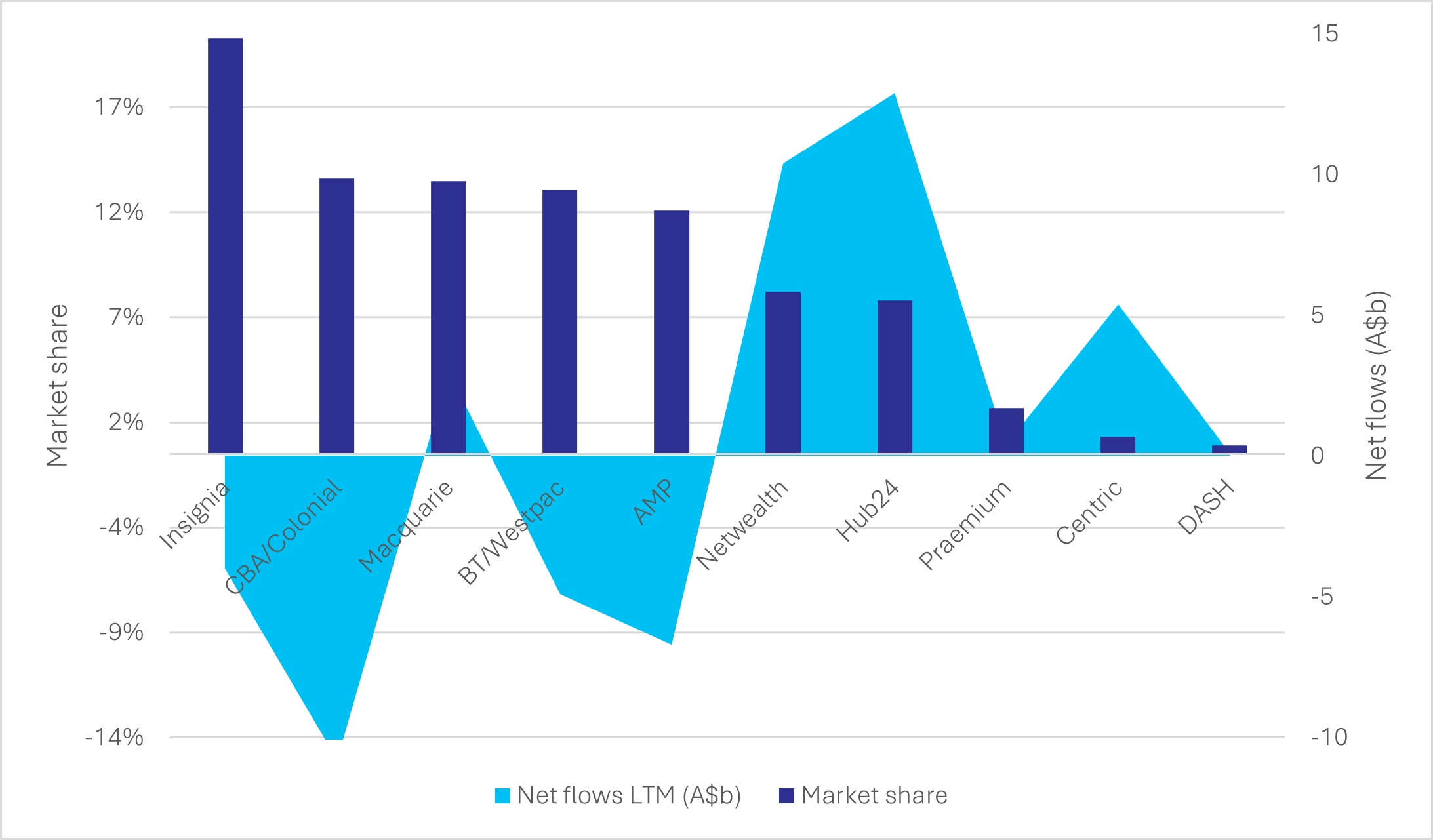
HUB & NWL have proved to be exceptional investments for many reasons:
Highly scalable business models with operating leverage and a 'flywheel effect'.
Sticky customers: once you've moved numerous client accounts onto a platform, it's a hassle to switch and/or run multiple platforms across your client base.
Underpenetrated market: these specialist platforms take share from incumbents as advisers shift from an aligned, vertically integrated dealer group to independent boutiques.
And it’s still relatively early in the game. HUB has a ~5% market share and NWL has a ~7.7% share, with both taking more than 10% of all new flows currently.
We think HUB and NWL are similar from an investment perspective, but we only own shares (in the Seneca Australian Shares SMA, which invests in 20-40 companies from inside the S&P/ASX 200, +12.45% p.a since inception) in HUB on valuation grounds - HUB trades on 26x EV/EBITDA vs 34x for NWL, a gap we think can close over time, with HUB24’s earnings projected to double within 3 years.
Trends inside wealth management
With promoted double-digit yields and no mark-to-market pricing, private credit continues to attract capital from retirees, particularly those who utilise an adviser.
Private credit is a financial adviser’s wet dream. Its high distribution yields, low volatility (aka. infrequent measurement), and relative obscurity make it an easy sell to high-net-worth clients - a ‘special situation’ exclusively available through the adviser. Regular cash flow keeps clients happy and most importantly, happy to continue paying ongoing investment management fees (despite the adviser not really managing anything as, generally, there’s limited opportunity to buy or sell private credit strategies.)
This cynicism should not be confused with the value that private credit can add to a portfolio, which is certainly real and valuable. We use private credit strategies for our clients, specifically in the Seneca Aggressive Income SMA. There is a real reason why private credit assets globally have jumped from US $310 billion in 2010 to $1.52 trillion today (source).
One of the biggest beneficiaries of the growth in these sorts of ‘alternative’ asset classes is MA Financial Group (ASX: MAF). MA Financial is a global alternative asset manager specialising in private credit, retail and hospitality. The group was listed on the ASX in 2017 and has grown its funds under management at ~20% CAGR.
However, credit assets under management have outperformed the rest of the MAF business, growing 46% CAGR over the last 5 years.
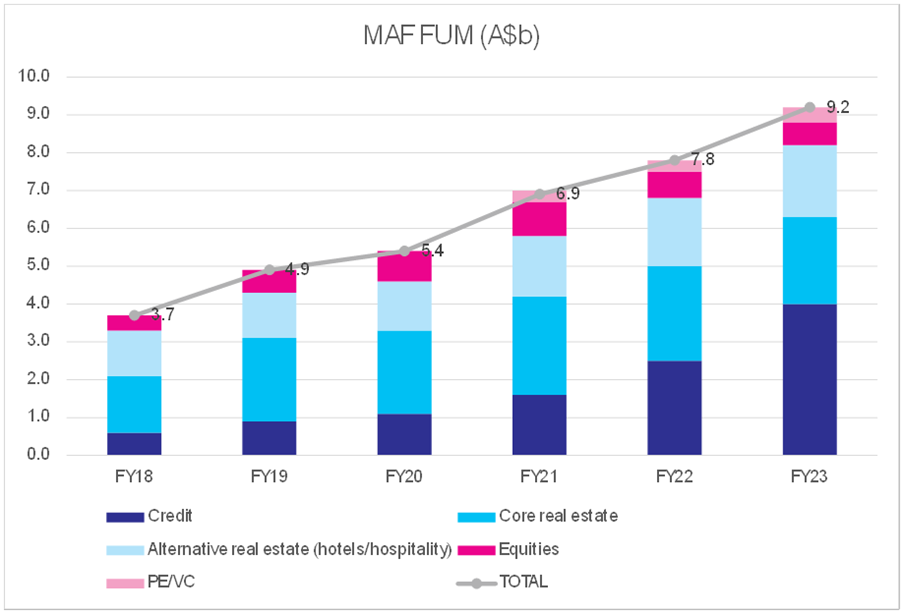
As we've seen with our portfolio company GQG Partners (ASX: GQG) (which we wrote up in March on Livewire) when net inflows accelerate, investors benefit from the 'double whammy' effect of earnings growth and multiple re-rate as those earnings are ascribed a higher valuation.
We foresee a similar situation with MAF, which on a forward P/E of only 12x, there is plenty of scope for upside driven by ongoing growth in fee-earning AUM. We expect above-market returns from MAF over the next 12 months to positively contribute to outperformance for the Seneca Australian Small Companies Fund (which has returned +23.89% since inception, 0.00% management fee + 20% performance fee above the RBA cash rate and high watermark.)
Grey nomads
With all those cash distributions from accelerating rents, high-yield private credit investments and term deposits, you won’t be surprised that travel is high on the agenda for many retirees. We see several high-quality ways to play the sector, both here and abroad. However, the highest impact is potentially in small-cap Camplify Holdings (ASX: CHL).
Benefiting from the preference for more domestic travel in a post-COVID world, remote destinations such as the northern reaches of Qld, WA and the NT continue to see growth in tourist numbers.
Camplify is a two-sided marketplace that connects campervan hirers with owners looking to generate some passive income from an underutilised asset – not dissimilar to Airbnb (NASDAQ: ABNB). Hirers can be targeted cheaply with digital marketing ad spend, leaving supply the only factor potentially limiting growth.
Given the shortage of campervans available for hire since COVID, rental yields for campervans have become increasingly attractive. This is further supported by a favourable tax ruling that allows owners to hire out their RV on peer-to-peer platforms (such as Camplify) and claim associated deductions. Camplify has a clear value proposition which we expect to drive continued organic growth.
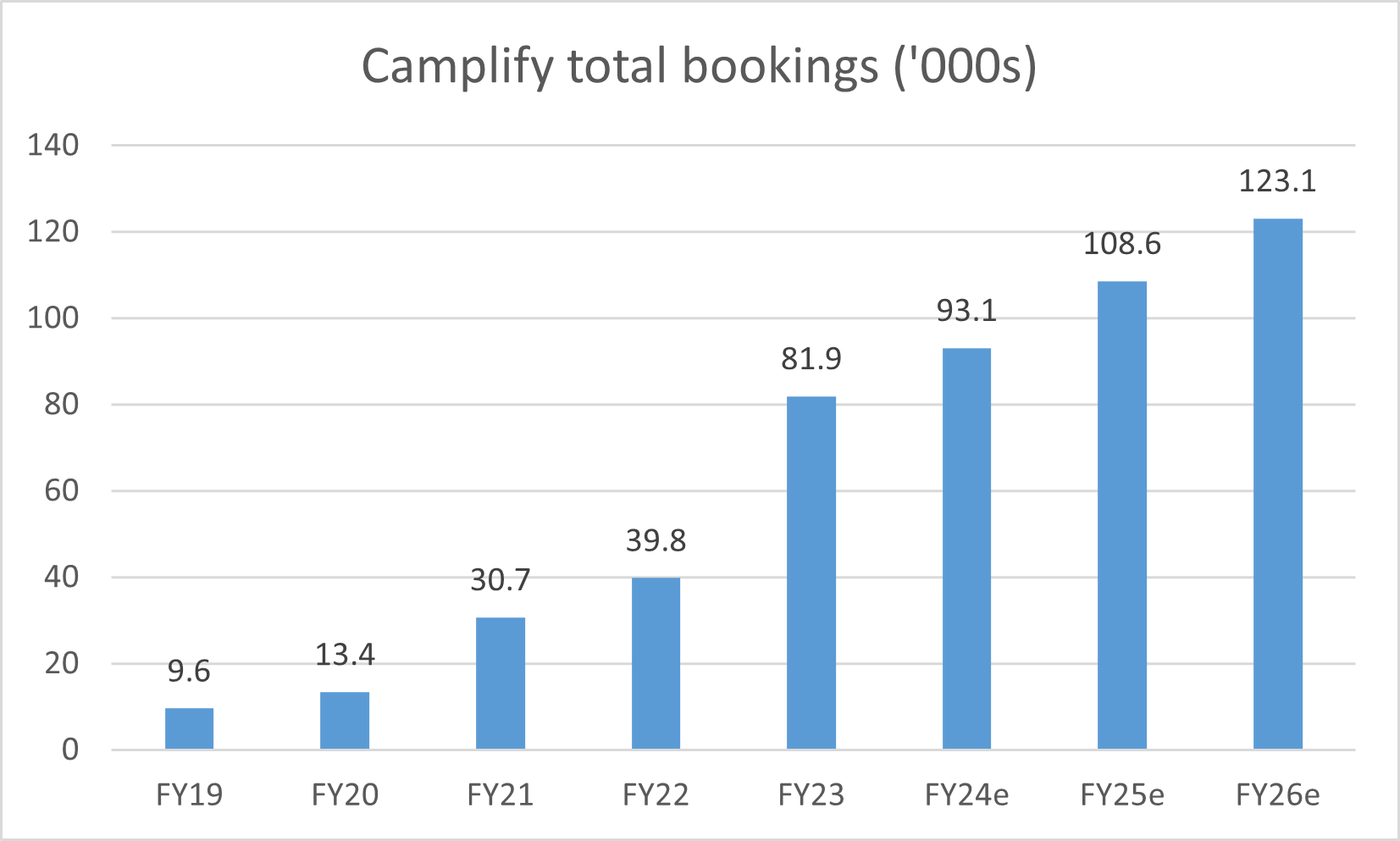
In May, the market was displeased with an announcement where management flagged higher-than-expected costs to integrate its acquired European platform, PaulCamper, creating a potential share price dislocation opportunity.
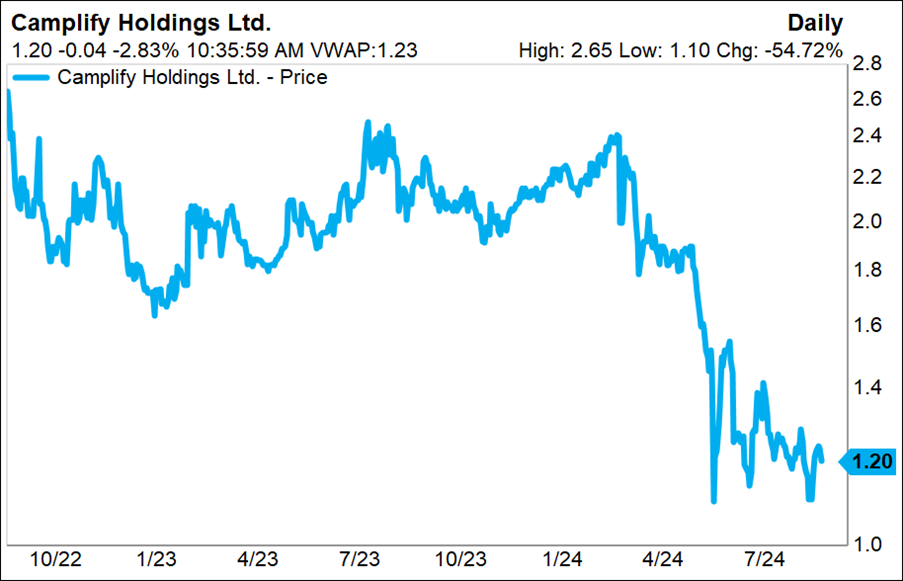
Source: Factset
With a first-mover advantage, a large, underpenetrated addressable market, an attractive insurance offering and an undemanding valuation of 1.3x EV/Sales, we see value in the stock if Camplify can deliver on its 3–5-year targets ($125m revenue at 20% EBITDA margins). We own it in the Seneca Australian Small Companies Fund.
Thanks to Ben Richards for his contributions to this article.
5 topics
8 stocks mentioned
1 contributor mentioned

